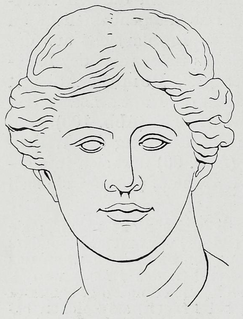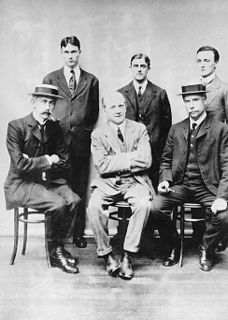 W
WAnthropometry refers to the measurement of the human individual. An early tool of physical anthropology, it has been used for identification, for the purposes of understanding human physical variation, in paleoanthropology and in various attempts to correlate physical with racial and psychological traits. Anthropometry involves the systematic measurement of the physical properties of the human body, primarily dimensional descriptors of body size and shape. Since commonly used methods and approaches in analysing living standards were not helpful enough, the anthropometric history became very useful for historians in answering questions that interested them.
 W
W3D body scanning is an application of various technologies such as Structured-light 3D scanner, 3D depth sensing, stereoscopic vision and others for ergonomic and anthropometric investigation of the human form as a point-cloud. The technology and practice within research has found 3D body scanning measurement extraction methodologies to be comparable to traditional anthropometric measurement techniques.
 W
WApe index, ape factor, or gorilla index is slang or jargon used to describe a measure of the ratio of an individual's arm span relative to their height. A typical ratio is 1, as identified by the Roman writer, architect and engineer Vitruvius prior to 15 BC. Vitruvius noted that a "well made man" has an arm span equal to his height, as exemplified in Leonardo da Vinci's c. 1492 drawing, the Vitruvian Man. In rock climbing it is believed that an Ape Index greater than one, where the arm span is greater than the height, provides for a competitive advantage, and some climbers have expressed the belief that exercise can result in an improved ratio, although this view is somewhat controversial.
 W
WArm span or reach is the physical measurement of the length from one end of an individual's arms to the other when raised parallel to the ground at shoulder height at a 90° angle. The arm span measurement is usually very close to the person's height. For example, a 168cm person will have an arm span of about 168cm (66in). Age, sex, and ethnicity have to be taken into account to best predict height from arm span. Arm span is sometimes used when a height measurement is needed but the individual cannot stand on a traditional stadiometer or against a wall due to abnormalities of the back or legs, such as scoliosis, osteoporosis, amputations, or those who are confined to a bed or wheelchair. Other, possibly more accurate measuring techniques include knee length or recumbent length when possible.
 W
WAlphonse Bertillon was a French police officer and biometrics researcher who applied the anthropological technique of anthropometry to law enforcement creating an identification system based on physical measurements. Anthropometry was the first scientific system used by police to identify criminals. Before that time, criminals could only be identified by name or photograph. The method was eventually supplanted by fingerprinting.
 W
WThe Brannock Device is a measuring instrument invented by Charles F. Brannock for measuring a person's shoe size. The son of a shoe industry entrepreneur, Brannock attended Syracuse University, New York, where he was a member of Delta Kappa Epsilon fraternity. Brannock spent two years developing a simple means of measuring the length, width, and arch length of the human foot. He eventually improved on the wooden RITZ Stick, the industry standard of the day, patenting his first prototype in 1925 and an improved version in 1927. The device has both left and right heel cups and is rotated through 180 degrees to measure the second foot. Brannock later formed the Brannock Device Company to manufacture and sell the product, and headed the company until 1992 when he died at age 89. Today, the Brannock Device is an international standard of the footwear industry, and the Smithsonian Institution houses samples of some of the first Brannock Devices.
 W
WA bustline is an arbitrary line encircling the fullest part of the bust or body circumference at the bust. It is a body measurement which measures the circumference of a woman's torso at the level of the breasts. It is measured by keeping a measuring tape horizontal and wrapping it around the body so that it goes over the nipples and under the arms.
 W
WCraniometry is measurement of the cranium, usually the human cranium. It is a subset of cephalometry, measurement of the head, which in humans is a subset of anthropometry, measurement of the human body. It is distinct from phrenology, the pseudoscience that tried to link personality and character to head shape, and physiognomy, which tried the same for facial features. However, these fields have all claimed the ability to predict traits or intelligence.
 W
WThe digit ratio is the ratio of the lengths of different digits or fingers. The 2D:4D ratio is the most studied digit ratio and is calculated by dividing the length of the index finger of a given hand by the length of the ring finger of the same hand. A number of studies have shown a correlation between the 2D:4D digit ratio and various physical and behavioral traits.
 W
WAn endocast is the internal cast of a hollow object, often referring to the cranial vault in the study of brain development in humans and other organisms. Endocasts can be artificially made for examining the properties of a hollow, inaccessible space, or they may occur naturally through fossilization.
 W
WFacial Angles refers to the content of two lectures on this subject by the Amsterdam professor of anatomy Petrus Camper on the 1st and 8 August in 1770 to the Amsterdam Drawing Academy called the Teken-akademie.
 W
WFacial symmetry is one specific measure of bodily symmetry. Along with traits such as averageness and youthfulness it influences judgments of aesthetic traits of physical attractiveness and beauty. For instance, in mate selection, people have been shown to have a preference for symmetry.
 W
WSir Francis Galton, FRS, was an English Victorian era statistician, polymath, sociologist, psychologist, anthropologist, eugenicist, tropical explorer, geographer, inventor, meteorologist, proto-geneticist, and psychometrician. He was knighted in 1909.
 W
WHuman height or stature is the distance from the bottom of the feet to the top of the head in a human body, standing erect. It is measured using a stadiometer, usually in centimetres when using the metric system, or feet and inches when using the imperial system.
 W
WThe neutral body posture (NBP) is the posture the human body naturally assumes in microgravity. Adopting any other posture while floating requires muscular effort. In the 1980s, NASA developed the Man-System Integration Standards (MSIS), a set of guidelines based on anthropometry and biomechanics, which included a definition of an average typical NBP created from measurements of crew members in the microgravity environment onboard Skylab.
 W
WPedobarography is the study of pressure fields acting between the plantar surface of the foot and a supporting surface. Used most often for biomechanical analysis of gait and posture, pedobarography is employed in a wide range of applications including sports biomechanics and gait biometrics. The term 'pedobarography' is derived from the Latin: pedes, referring to the foot, and the Greek: baros meaning 'weight' and also 'pressure'.
 W
WWilliam Herbert Sheldon, Jr. was an American psychologist and numismatist. He created the field of somatotype and constitutional psychology that correlate body types with Temperament, illustrated by his Ivy League nude posture photos.
 W
WA shoe size is an indication of the fitting size of a shoe for a person.
 W
WArthur Thomson was a British anatomist and anthropologist. He is best remembered for his formulation of Thomson's Nose Rule, which states that ethnic groups originating in cold, arid climates tend to have longer and thinner noses, while those in warm, humid climates tend to have shorter and thicker noses. The underlying physiological explanation for Thomson's Rule is that noses help warm and humidify inhaled air; a longer and thinner nose increases the relative contact area between the air flow and the nasal cavity, and as such it becomes a highly selected trait in colder climates.
 W
WVon Luschan's chromatic scale (VLS) is a method of classifying skin color. It is also called the von Luschan scale or von Luschan's scale. It is named after its inventor, Felix von Luschan. The equipment consists of 36 opaque glass tiles which were compared to the subject's skin, ideally in a place which would not be exposed to the sun. The von Luschan scale was used to establish racial classifications of populations according to skin color; in this respect it is in contrast to the Fitzpatrick scale intended for the classification of the skin type of individuals introduced in 1975 by Harvard dermatologist Thomas B. Fitzpatrick to describe sun tanning behavior.
 W
WThe waist-hip ratio or waist-to-hip ratio (WHR) is the dimensionless ratio of the circumference of the waist to that of the hips. This is calculated as waist measurement divided by hip measurement. For example, a person with a 30″ (76 cm) waist and 38″ (97 cm) hips has a waist-hip ratio of about 0.78.